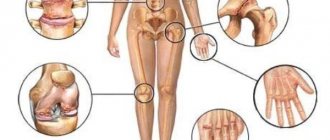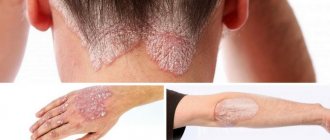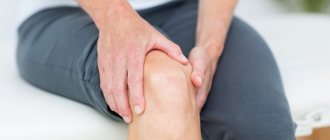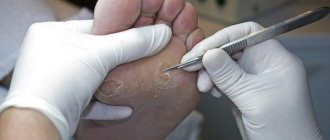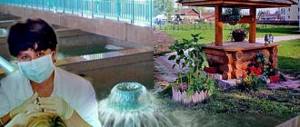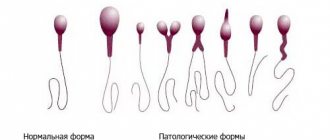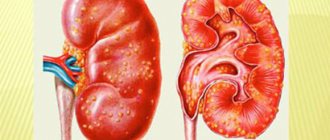Crackling joints are commonly referred to as cracking sounds heard during active or passive movements.
Everyone has encountered this phenomenon and almost everyone is interested in knowing why joints click. There is no definite answer to this question, so if there is a crunch in the joints, the reasons may be different. This may be a physiological process or a harbinger of an incipient disease.
Reasons why human joints crack
Healthy joints move silently, a person does not feel them. Crunches and clicks appear if there are any deviations from the norm. This may be a completely harmless anatomical structural feature that causes a disruption in the biomechanics of the joint.
But most often, joints crack due to damage to the articular surfaces and insufficient amount of synovial fluid. For example, a crunching sound in the knee joint indicates that the cartilage is subject to increased friction upon contact, which can lead to rapid wear.
Physiological cracking of joints
In humans, all joints are structured the same. Therefore, the reason why the joints on the legs crunch or the elbow clicks lies in the structure of the joint and the state of its constituent elements, and not in its location. Ideal silent sliding and minimal friction is achieved due to hyaline cartilage covering the articular surfaces.
How are human joints structured?
The cartilage is enclosed in a membrane that contains synovial fluid that reduces friction. The shell has folds that allow for high-amplitude movements. All elements of this complex mechanism are interconnected by ligaments.
When necessary, they come into motion: they move, shift, stretch. At this time, a noise is heard, the sound of which resembles a crunching, clicking, crackling or grinding sound. In fact, joints throughout the body crunch, but the intensity of the sound varies: from indistinguishable to the ear to clearly audible.
People describe the sound as clicking or crunching, and doctors call it crepitus. Most often, patients complain of a crunching sensation in the elbow joint, cervical spine, clicking in the knee joint and fingers. Crepitus itself is not a symptom of pathological processes.
Important! When there is a crunch in the joints without pain, then in most cases this is a physiological process that does not threaten health and does not require medical attention.
Diagnostics
In case of crunching or clicking in the joints during flexion and extension, which occurs without pain, contacting a doctor should be mandatory.
Wasted time will only lead to the progression of the disease, and as a result, the destruction of bones.
If you experience discomfort in the joint area, you should consult a rheumatologist, surgeon and orthopedist.
The specialist, taking into account all complaints, examines the patient. His responsibility is to identify the nature of the crunch, depending on the duration.
Further referral for an X-ray examination, which will determine the damage to the joint and determine the cause of the disease. The patient may also be referred for an ultrasound or MRI. A mandatory point in the examination is donating blood and urine to determine the levels of salts in the body.
Diagnosis of joint pathology does not take much time and does not require the use of special equipment.
Classic treatment is carried out in three stages:
- relief with analgesics.
- Suppressing inflammation with non-steroidal anti-inflammatory drugs. For example, diclofenac, ibuprofen, meloxicam. They not only provide excellent pain relief, but also fight inflammation.
- Restoration of damaged cartilage. The procedure does not lead to a complete cure. However, it stops joint degeneration to a greater extent, preventing subsequent destruction. Chondroprotectors help with this. They are used at an early stage of the disease, when the patient does not experience joint pain. The advanced stage is also treated with chondroprotectors, which stop the destruction of joints and reduce the amount of medications used.
Important! Pharmacies sell various chondroprotectors from many companies. The decision on which drug to treat the patient is determined only by the attending physician!
The duration of treatment is determined by a specialist. It usually takes 3 months.
A joint that cannot be restored and cannot be treated is replaced through surgery.
Physiotherapy
Crunching in the joints, accompanied by pain and resulting from injuries and pathologies, can be treated not only with medication, but also with physical therapy. Physical therapy, electrophoresis and manual therapy are common among patients.
Read also: Crunching in bones and joints
Other methods
Taking a warm bath has a relaxing effect on the muscles. Afterwards, the affected joints are thoroughly lubricated with a fatty cream. Compresses using citrus and vegetable oil will not harm.
the massage yourself for 15 minutes. If the pain intensifies, all manipulations are stopped immediately.
Exercise therapy is a great way to relieve stress on affected joints. When you have a crunch, you shouldn’t just take medications and wait for the result, you need to move. Gymnastics is performed smoothly, in the most gentle manner.
When waking up in the morning, the “bicycle” and “scissors” exercise will be indispensable. The joints are activated and prepared for movement.
When working sedentarily, exercises are performed directly on a chair. Various head turns, bends, arm and shoulder movements. The same "bicycle".
Causes of physiological cracking of joints
Crepitus occurs most often in adolescents. This is explained by the fact that in children some parts of the body grow faster than the entire body and functional disproportion periodically occurs. This is one of the reasons why a child’s joints crack.
One of the possible causes of crunching in the joints
Another reason why joints crack is the congenital increased extensibility of ligaments. It provides a greater range of motion and makes the joints hypermobile. When moving, the articular surfaces move away from each other, and when returning, they make a crunching sound. This feature is more common in young women and disappears with age, when degenerative processes begin to develop in the joints.
Treatment of cracking joints
Treatment for cracking joints begins with diagnosis, which takes place in several stages:
- Preliminary examination by a specialist: surgeon and/or orthopedist.
- X-ray of the problem joint.
- Ultrasound examination of tissues adjacent to the joint.
- Computed tomography or magnetic resonance imaging.
- Laboratory research. In most cases, they are limited to general tests, but additional studies may also be required (for example, if the infectious nature of the disease is suspected).
- Joint puncture test (taken when fluid accumulates).
Modern treatment involves complex therapy to solve the problem of crunching in the joints. Mostly crunching in the joints is a symptom of arthritis or arthrosis. Therefore, the treatment regimen will almost always be the same, but edited according to the individual needs of the patient.
Modern medicine offers the following scheme for the treatment of crunching in the joints:
- Drug treatment.
Therapy involves taking the following medications:
- Non-steroidal anti-inflammatory drugs for internal and external use in the form of tablets and gels, ointments. Medicines are prescribed to relieve pain, inflammation and other symptoms accompanying the disease. The course of taking non-steroidal anti-inflammatory drugs is prescribed for a period of 10 to 15 days and can be extended by a specialist if necessary.
- Chondoprotectors are one of the newest medicinal methods of influencing the restoration of cartilage tissue. The drug consists of glucosamine and chondroitin. Effectiveness is achieved after taking the drug for 4-5 courses lasting 10 days. Chondoprotectors are prescribed in the form of drugs for oral administration, as well as in the form of local injections into the affected areas.
- Vitamin complex, useful microelements - especially drugs that stimulate the regeneration of cartilage and bone tissue, such as calcium, zinc, phosphorus, B vitamins, as well as vitamins A and E.
- Preparations containing hyaluronic acid. This substance can replace the synovial fluid that is produced by the human body. Synovial fluid serves as a natural lubricant that covers and envelops the joints, which prevents them from abrasion and helps stop crunching during movements.
- Dietary supplements that stimulate the restoration of cartilage tissue and improve the composition of synovial fluid, saturating it with amino acids.
- Non-drug treatment. The basis of non-drug treatment is physiotherapy and assistive devices such as bandages, crutches, etc.
The most common non-drug treatment methods:
- Physiotherapy is an integral part of joint rehabilitation. Physiotherapy involves influencing the affected areas with one or more manipulations: shock wave therapy, magnetic therapy, UHF.
- Manual therapy: therapeutic, relaxing.
- Reflexology.
- Vacuum therapy.
- Physical therapy, cycling, swimming.
- Immobilization (immobilization) of joints if necessary. Immobilization is carried out using bandages, bandages, and knee pads.
On the subject: List of modern medicines and drugs for joints
Non-drug treatment does not end there. There are also a lot of folk remedies that help cure crunching in the joints. In addition, it is important to monitor your diet. The cause of crunching in the joints is often excessive salt deposition.
Therefore, it is necessary to normalize nutrition by forming the right diet:
- Eliminate junk food from your diet as much as possible. Remove everything fried, fatty, smoked, salted and canned.
- The basis of nutrition should be built on dairy and fermented milk products. Cottage cheese, milk, kefir and other products contain a lot of calcium, which strengthens bone and cartilage tissue and promotes their accelerated rehabilitation.
- Meat and fish dishes also have a positive effect on joint health. But it is better to prepare such dishes by baking in the oven, boiling or steaming. Frying and smoking is strictly not recommended.
- Vegetables and fruits contain a lot of vitamins and beneficial microelements, and therefore are an indispensable component of a proper diet.
- Nuts, natural spices, and herbs also have a beneficial effect on the condition of bones, cartilage and tendons.
Pathological causes of crepitus
Many different diseases can cause crunching. It is important to determine the cause of the clicking sounds as early as possible and begin treatment.
Possible reasons why joints click
Here is a list of the most common reasons that cause clicking sounds in joints:
- joint inflammation
- arthrosis and osteoarthrosis
- consequences of injury
- excess salts
- endocrine diseases
- metabolic disease
- lack or excess of physical activity
- obesity
Important! If crepitus is accompanied by pain, this indicates a developing disease. Doctor's consultation required!
Development of pathology in different parts of the body
Any joints in different parts of the body can crack. Crepitus itself is not terrible, but it is quite often a signal of an emerging pathology. In most people whose activities are not associated with high loads on the arms and shoulder girdle, the joints of the legs suffer more: the hip and knee joints.
This is due to the fact that they bear maximum axial loads, which contribute to faster wear. A sedentary lifestyle, as well as heavy physical labor or intense sports activities, are equally harmful to joints. Excess weight also puts additional stress on your legs.
Crackling joints in children
Children, just like adults, often face the problem of crepitus. As a rule, its cause is temporary hypermobility of the joints caused by the immaturity of the articular-ligamentous apparatus. This is due to the fact that in children the formation of different organs and tissues does not occur simultaneously. Therefore, if a child has cracking joints without pain and limitation of movements, this is a physiological process.
Why does a child's joints crack?
The exception is a crunch in the hip joint. When it is heard during the formation of cartilage, it is normal. But at the end of the process of ossification of the cartilage tissue, and this happens at 5-8 months, the clicking should stop. Otherwise, you need to consult an orthopedist.
What can crackling knuckles tell you?
There is one unassuming problem that many, if not the absolute majority of the population of our planet have encountered, which is called cracking in the joints. The harmlessness of widespread crackling in the joints is very false. Often, when it is detected, it is necessary to assume a beginning trend of destructive processes in the joints. Moreover, a very serious crunch in a joint signals an increasing probability of its gradual development into arthritis or arthrosis. But these sores are already obviously dangerous.
However, according to a certain number of competent representatives of medicine, there is, so to speak, a normal joint crunch. First of all, we can talk about such a crunch when there are no simultaneous pain sensations. There is no need to worry too much here, although the causes of normal crunching currently exist only in a hypothetical version. One version suggests that the synovial fluid washing the joints contains a certain amount of gas bubbles. This gas, at a certain amount, helps to increase the volume of the joint cavities, which causes a click in the joints when it moves. Cavitation is the term used to describe this process; it does not go beyond the norm.
Crunching in the joints is not so harmless
It should be noted that as air bubbles dissolve in the joint fluid, the surfaces of the articular bones removed by the click come closer together. This internal movement in the joint can cause new crunching sounds. These crunching clicks occur once every fifteen to twenty minutes.
In addition, only dull, and not voiced, crunching sounds can be caused by a tendon or ligament touching protruding bone fragments located nearby. This natural contact occurs during movement, for example, between the articular bones in the shoulder, wrist or hip.
In a certain group of people, the manifestation of crunching in the joints is explained by the presence of small defects in connective tissues. This weakness in the joint-ligamentous system creates opportunities for increased flexibility. Outwardly, it looks very impressive, especially when demonstrated by gymnasts in the circus or sports. In reality, these defects lead to excessively frequent weakening of the ligaments, associated with subluxations and dislocations of the joints. No one would risk recognizing such a situation as the norm. Doctors classify such individuals as risk groups for joint injuries and the occurrence of diseases such as arthrosis.
Joint crunching, for example, in the knees, deserves special attention if it is accompanied by pain. Such a crunch occurs more often than the phenomenon described above, which is recognized as the norm, with almost every movement of the joint. In addition, limitations in his mobility are evident. Here you need to go to the nearest medical facility, because this may be a signal of the presence of bursitis, tendonitis or some other inflammation of the joint. Strict medical statistics consider such manifestations to be most common in the knee joints.
There is also a reason for the occurrence of crunching in the joints, which can firmly be attributed to the signs of modernity. And she still lies in the same immobilized way of life. The lack of proper constant physical effort leads to weakening and further atrophy of muscle tissue. This situation inevitably weakens the ligaments, which, in turn, leads to a weakening of the articular apparatus. This is where the active clicking and crunching in such joints begins. The situation can still be saved by returning to physical activity. Of course, not sharp, but effectively building up.
Excessive physical activity can equally cause crunching in the joints. Damage to joints can be caused by excessive training in sports, dragging excessive weights, and prolonged standing in certain types of work. The joint crunch that appears in such cases may not yet be a sign of a serious illness, but it is certainly a harbinger of it. A particularly dangerous factor in this sense is crunching in the knee joints. If you leave the process to chance, the path to arthrosis will not be so far.
There is also a serious reason to be wary when you detect crunching in the joints, which is associated with past injuries. These may include dislocations or, say, sprains. No matter how thoroughly the restoration measures are carried out, the weakening of the joint remains. This means that he should be classified as at risk for new cases of injuries and other ailments. This must be firmly remembered and if a crunch occurs in such a joint, rush to a medical facility to clarify the situation.
The unfortunate cause of joint crunching may be the underdevelopment of various tissue structures in the joint (dysplasia). This situation can appear on the surfaces of joint bones, ligaments, etc. The consequences of dysplasia have certain similarities with post-traumatic situations and require special attention and vigilance on the part of the patient.
Some distinctive features characterize crunching in joints in children. However, there is little point in parents panicking immediately. The immature ligamentous-muscular apparatus is quite ready to provoke such a crunching. Medical statistics confidently show that after some time, as the child grows and develops, the crunch will fade into oblivion. Concern should be raised when crunching sounds are detected in one specific joint. Here it is better to consult a traumatologist.
In some cases, additional reasons for the manifestation of joint crunch are possible. In order to avoid serious troubles with your own joints, you need to listen to the body’s signals and promptly receive medical advice.
Preventive measures
Degenerative-inflammatory joint diseases can have various causes. These are genetic predisposition, autoimmune and infectious diseases, injuries.
But for all diseases without exception, regardless of the cause, there are negative factors that aggravate the patient’s condition. These include poor nutrition, sedentary lifestyle and excess weight.
Nutrition
It is necessary to adhere to a proper diet low in salt, animal fats and flour. It is recommended to eat more plant foods and dairy products, and eat fish 3 times a week. Vegetable oil, sunflower seeds, sesame seeds and pumpkin seeds are very useful.
Useful and harmful products
Water mode
A lack of fluid in the body causes a decrease in the amount of synovial fluid, which nourishes hyaline cartilage and plays the role of lubricant. Therefore, you need to drink a lot - 2-3 liters per day.
Physical activity
Throughout the working day, it is important to periodically move, change positions and warm up. It is necessary to do therapeutic exercises, but physical activity should be moderate, and you should not put too much stress on the joints that are cracking. If you are overweight, you should definitely lose weight to reduce the load on your joints.
After reading the article, you learned what to do if your joints are cracking. Quite often, crepitus is a physiological phenomenon that does not require treatment. But if it is accompanied by pain or other pathological signs, then you need to consult a doctor and undergo an examination for early diagnosis of the disease.
Degenerative processes in joints are characterized by a long latent course. Pain and limitation of movement appear in the later stages, when the hyaline cartilage is already severely damaged.
Therefore, timely identification of the causes of crunching and comprehensive treatment can stop the development of the disease.


